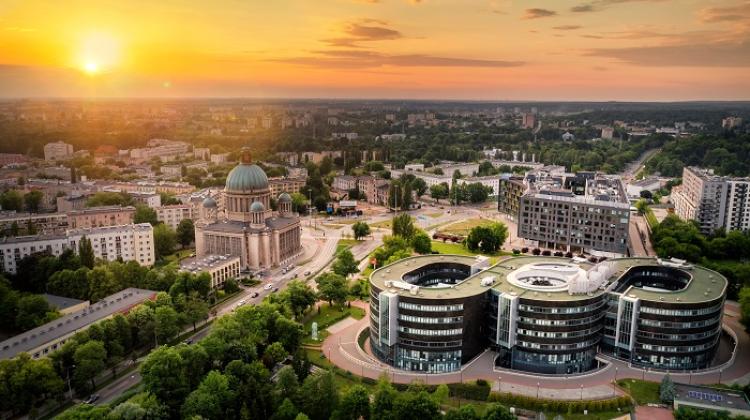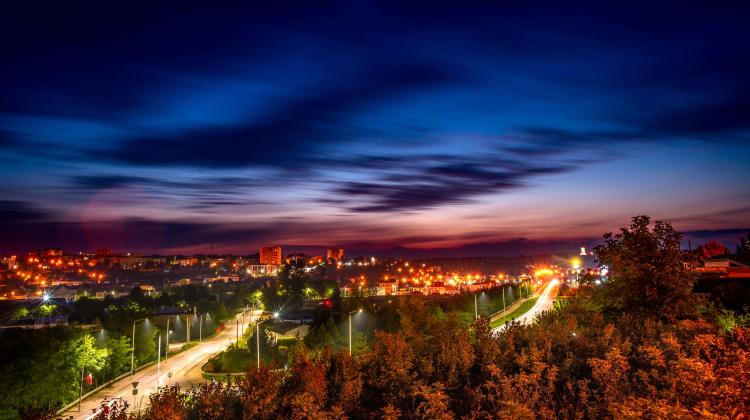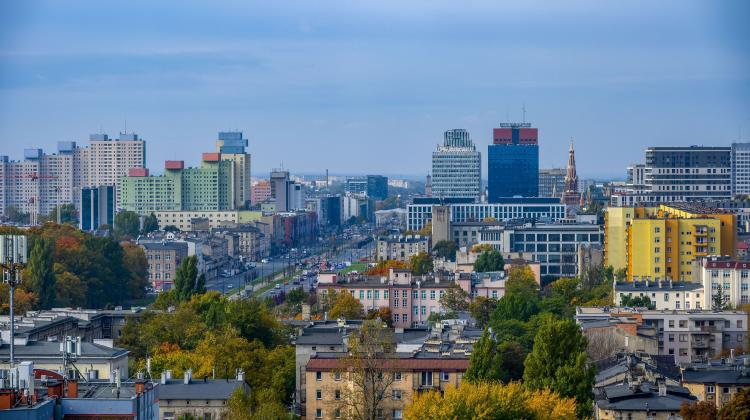Expert: If you encounter a wild animal, remain calm
 Świnoujście, 10.07.2017. A sow with piglets on the road leading to the ferry crossing Karsibór in Świnoujście. PAP/Marcin Bielecki
Świnoujście, 10.07.2017. A sow with piglets on the road leading to the ferry crossing Karsibór in Świnoujście. PAP/Marcin Bielecki
There are more wild animals in cities: over 700 boars were captured in Warsaw in 2017 alone. If you meet such an animal, remain calm, says an expert from the City Forests in Warsaw.
"In the capital, above all, we have a very large population of wild boars: only last year 744 of them were caught in the city" - told PAP Robert Strąk, head of the Animal Rehabilitation Centre at the City Forests in Warsaw. He added that other animals such as foxes, badgers and sometimes even elks also turn up in the city. The city is also home to various well-known small mammals: hedgehogs, squirrels and bats.
Although wild animals appear primarily in forests and other green areas, they can be now encountered more often in the urbanized parts of the city. "For example, we had a report about foxes near Marszałkowska Street, or a wild boar moving near the Warsaw Old Town. We had to give it a pharmacological agent to transport it from there" - recalls Robert Strąk.
The farther away from the city centre, the more likely it is to encounter a wild boar. What should you do in this situation? "The most important thing is to remain calm and retreat slowly" - says Strąk. - "It is clear that the majority of city residents do not have the appropriate experience: they have never had anything to do with such a animal, nor have they seen it live. Be careful not to frighten the animal, do not do anything that could possibly provoke something that we would consider an attack" - he advices.
This particularly applies to dog owners who often allow their pets to run freely in less populated areas or during walks in urban parks. "When you walk a dog, keep it on a leash" - says the expert from the Animal Rehabilitation Centre. - "We often receive reports about dogs attacked during a walk, after they run further away from their owner. It usually it turns out that the situation looks like this: a loose dog approaches a wild boar, barks at it, as a result the animal attacks the dog, and the dog runs back to its owner - if it still can run. There are cases that dogs are killed or seriously injured by wild boars. A wild boar's charge is often perceived as an attack on a human. Meanwhile, we should always use common sense and observe basic safety rules related to staying in forest areas" - appeals Strąk.
The municipal services should only be informed of a wild animal if it is outside its natural environment or needs help. In this case, you can contact the City Guard that has so-called Eco Patrols - units whose tasks include saving animals.
But you should always use common sense. "Completely healthy young animals are often brought to the Animal Rehabilitation Centre: deer, hares, hedgehogs. People do not understand that these animals' mothers have not abandoned them, they are nearby. It is always best to use common sense: if the animal needs help, call for help. If it does not, it is better to leave it in its natural environment" - Strąk explains.
While trying to peacefully share the city with wild animals, we should remember that they are usually not aggressive. "We actually have not recorded cases of unprovoked animal attacks" - says Strąk. "It is people who react differently to animals. Animals have become accustomed to the presence of man and behave differently than in forest conditions".
Wild animals have fairly easy access to food in urban areas, which why their populations grow. "Residents often feed these animals, consciously or not, and field inspections often show that food leftovers or mowed grass are thrown away in the place where, for example, wild boars have appeared. Easy access to food attracts animals that get used to human presence and leave the forest for more urbanized areas" - explains Strąk.
Another factor causing the appearance of wild animals in urban areas is the growth of cities. "Areas on the outskirts of the capital used to be natural habitats of wild animals. Today, due to the expansion of urban areas, there are more human - wild nature +conflicts+" - says the expert.
He warns that wild animals definitely should not be fed. "We have set up feeders and mineral licks in the city to draw these animals away from the main traffic. Uncontrolled feeding means that animals are more likely to come to a given place and get used to being fed there" - says Strąk.
PAP - Science in Poland, Katarzyna Florencka
kflo/ zan/ kap/
tr. RL
Przed dodaniem komentarza prosimy o zapoznanie z Regulaminem forum serwisu Nauka w Polsce.

















